Are you planning on square foot gardening? I have used the square foot gardening method and I couldn’t be happier with the results! I’ve been able to grow way more food in a small space, I’ve and cut my time weeding in the garden down considerably.
And guess what? You don’t even have to have raised beds to use the method! I love saving space so much, that I use the square foot gardening method in my regular in-ground spaces too.
Even though square foot gardening is easy, I made a lot of mistakes in my first couple of years. Fortunately for you, you can use what I’ve learned to your advantage when you plant and calculate your square foot garden.
In this post, I’ll tell you the top 12 things that will save you a lot of headaches in your small-space garden and ensure you have an abundant harvest each and every year!
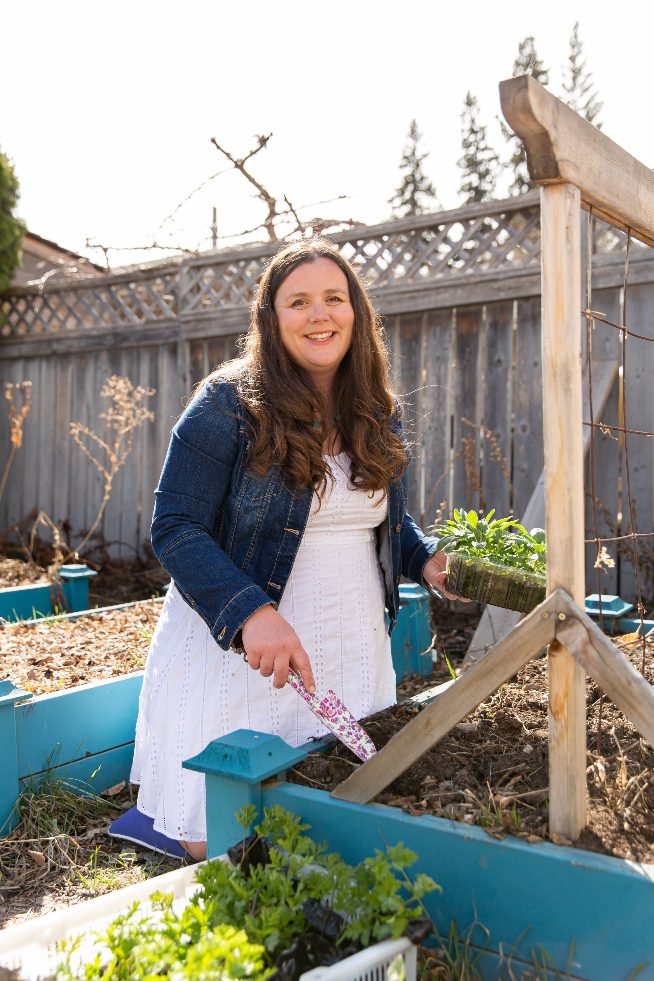
This post contains affiliate links, which means that I earn a small commission if you purchase something at no extra cost to you. You can read more about it in my privacy policy. Thanks for supporting Shifting Roots!
1. Use a Grid & Plan Ahead
Planning out where you are going to put each vegetable in a grid before you plant everything is extremely important. Grids are simple to see and give you an organized framework for your garden. Since you can visualize everything, it will also help you see potential mistakes in spacing that could ruin the number of vegetables you get. (More about how to figure out the ideal spacing below!)
Like the planner in the picture? Get your free copy here.
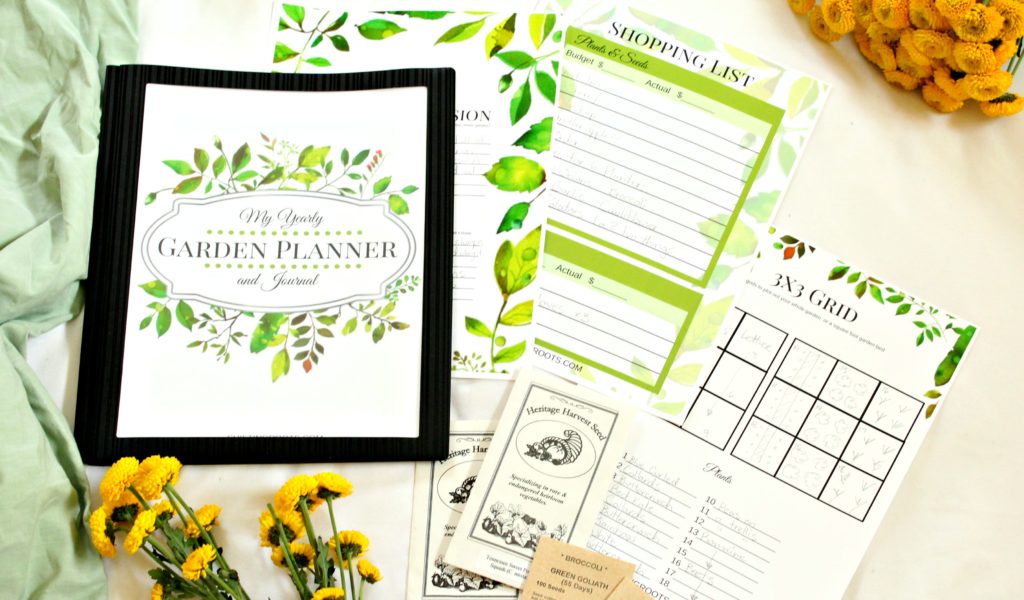
2. Use a Seeding Square
Vegetables in a square foot garden are planted in spacings of 1, 4, 9, or 16, with some vegetables taking up 4 large squares. I would highly recommend using the Seeding Square, as I use it all the time in my square foot gardens.
The Seeding Square will accurately place the seeds in each square with the minimum length apart for them to grow in the one-foot square. This will allow you to maximize your space and not overcrowd your vegetables.
Once you’ve used the Seeding Square for a couple of years, you’ll likely be able to eye-ball the spacing. Even so, I still find myself using it just to make sure my beds are straight.
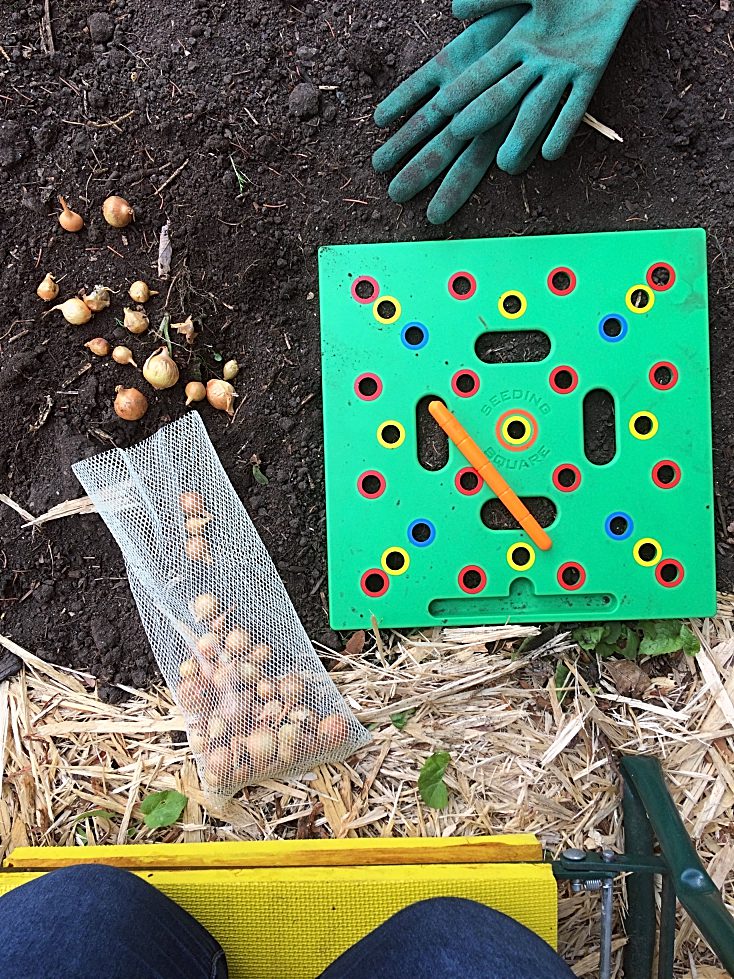
RELATED: 8 Reasons to Start Square Foot Gardening in Your Backyard
3. Start Small
If you are new to growing square foot gardens, don’t try too much at once! A smaller 2×2 (4 grid squares) or 4×4 bed size (grid of 16 squares) is a good starting point! It is easy to construct and grow a surprising amount of plants, and it’s accessible from all sides.
Starting too big can become overwhelming and stressful if you are inexperienced in square foot gardening. Starting small will be less costly and much more manageable, even though it’s super tempting to go overboard in the spring after a long winter.
While the raised bed might not be super expensive to buy, you might be surprised at how much it costs to fill that new raised bed up with soil. For a 4×4 bed, I’ve found that it costs at least $50 worth of soil to fill it up–and at the time of writing I haven’t checked how much the cost of soil has gone up since I last filled a raised bed.
4. Companion Plants
I personally take most companion plant pairings with a grain of salt. For example, I like planting my Zinnias with my tomatoes, but does that mean that just because one year it proved to be an ideal pairing it will be every year in every garden setting?
Maybe. Maybe not. But I was one of the few people in town who had good tomatoes that year when I planted Zinnias and tomatoes side by side… So maybe.
I like to think of companion planting more in terms of interplanting and preventing plants from shading one another out. For example, spinach under a cucumber trellis is a good idea. By the time the spinach is ready to be pulled out, the cucumbers will take over that empty space.
Planting peppers beside tomatoes is a terrible idea. Not only are they from the same family of vegetables, but the tomatoes will eventually shade out the peppers.
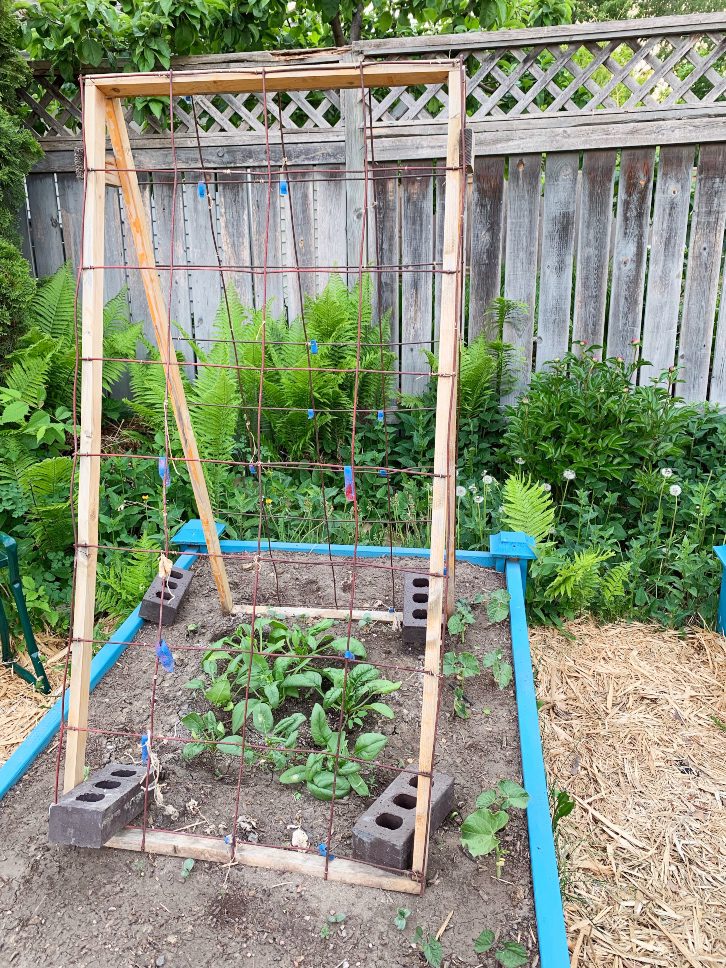
5. Keep Height in Mind
Vining plants can take up a lot of space – BUT – they are definitely a win for square foot gardens since they grow upwards! Upward growing plants are a great utilization of space.
These taller vegetables can work to your advantage if planted correctly. On one hand, if there are heat-loving plants amongst your taller plants, make sure to plant taller veggies, like tomatoes, on the north side of your bed. This will allow the smaller plants to get their daily dose of sun.
On the other hand, if you have shade-loving veggies that do not require direct sun, plant your tall ones toward the middle of your garden! This way, the sun-loving plants can be on the north side and get their sunbath, while the shade-seeking plants can be saved by the tall plants in the middle.
If you need some extra help with this, I’ve come up with four done-for-you plans to plant in your square foot garden. You can download them here.
Get 4 Free Square Foot Gardening Templates

Start your square foot garden the easy way!
You'll get 4 4x4 plans for
- Salad Garden
- Beginner's Garden
- Salsa Garden
- Kid's Garden
Plus a mini email course that gives you short, actionable tips for keeping your garden alive.
6. Fertilize, Refresh, and Rotate
The soil in your square foot garden will need to be amended every year. Add in compost, manure, and optional peat moss to replenish the nutrients that the vegetables used up the year before.
It’s also a good idea to rotate what you plant where. However, as long as you keep adding in compost and manure each year, it’s not as critical.
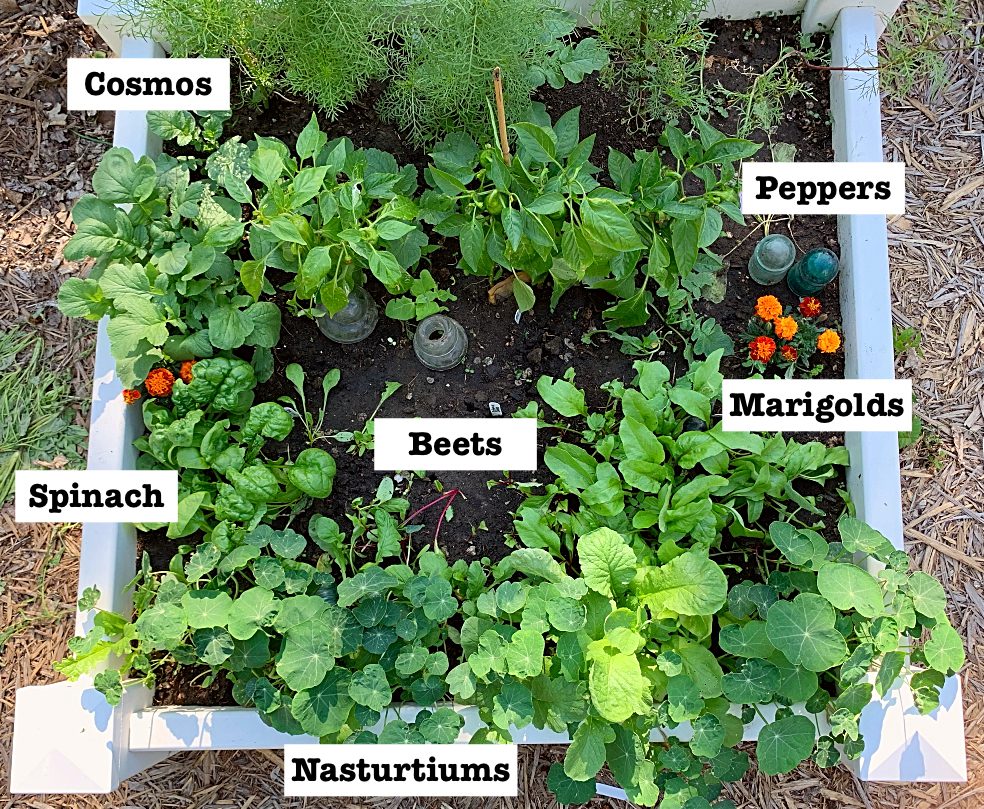
7. Watering & Weeding
The soil in square foot gardens, especially in raised beds, tends to dry out quickly. Plan on watering your beds every day in the summer, and possibly twice a day if the temperatures start soaring.
However, be careful to only water when your garden needs it, as over-watering is a common, preventable mistake for beginner gardeners to make. To make sure you get it right, feel the soil with your fingers. If it feels dry it needs water. If it doesn’t, don’t water it.
Weeding is a pain for most gardeners out there, but a perk of raised beds is that you are not required to weed as much as in a traditional garden. The closer spacing of plants means that there isn’t much room for weeds to grow. However, you still need to weed once a week initially, then as needed once the plants are larger.
To help with both problems, add a layer of mulch around your plants once they’re 4-6 inches high. I like to use grass clippings, straw, or old leaves.

Tips Related to Raised Beds
Most square foot gardens out there are typically in raised beds. These next few tips and tricks are specifically for raised square foot garden beds.
Side note: You don’t have to have a raised bed to use the square foot gardening technique! Check out this blog post for how you can apply the square foot gardening method to a regular, in-ground garden.
8. Use Treated Scrap Wood
Using treated scrap wood to build your beds? Make sure it’s newer than 2003, as anything earlier contains carcinogenic materials that will leach into your soil, making the vegetables you grow unsafe.
Cedar is some of the best wood you can use, as it can last for 10-15 years and looks amazing. Unfortunately, it is more expensive in most areas. However, as long as you have a wood that is rot resistant and safe for soil and plants, then it is safe to use.
9. Soil Costs More Than You Think
When making new beds, know that the cost of soil will be 2-4 times the price of the garden bed. You need good soil that will retain the water and nutrients. You will want the garden beds to be a mix of topsoil, compost, and other organic material.
You can purchase soil in bags from your local garden centre or big box store. If you’re filling up more than one bed, it may be more economical to purchase soil in bulk from a landscaping company.
10. Use Weed Suppressing Fabric or Cardboard
Make sure any weed-suppressing fabric goes under both the inside AND outside of the frame of the bed. If this is not done, you’ll get weeds and grass right up against the bed that are hard to pick out or get rid of.
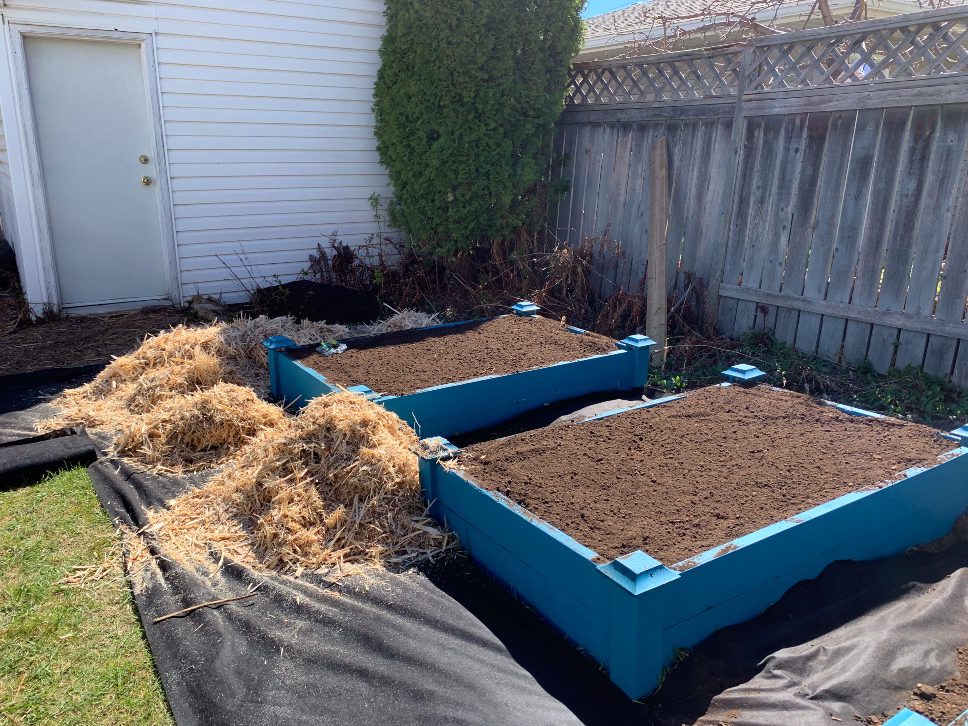
11. Do This One Trick to Save Money on Soil in High Raised Beds
Making a higher raised bed than normal? Fill in the bottom with wood and twigs to cut down on the soil you’ll need! It will decompose over time and save you some money on soil.
12. Keep Depth in Mind
Keep in mind that some root vegetables have deep roots. If you want to grow root vegetables, your beds should be a minimum of 12 inches high. A depth of 18 inches is ideal.
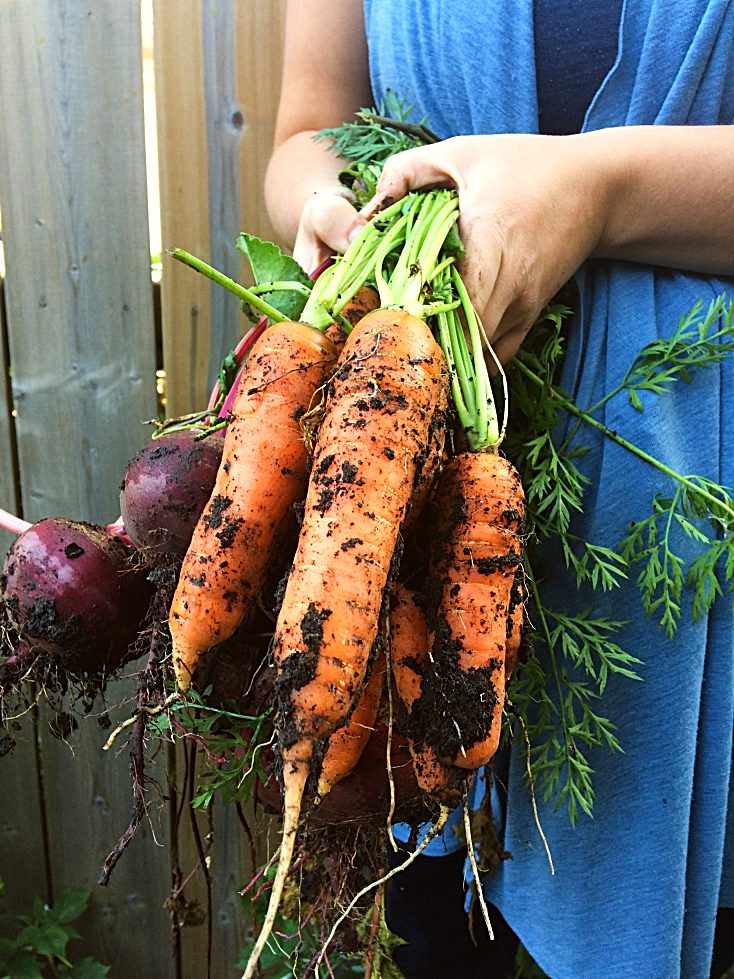
I hope these 12 square foot gardening tips help you on your gardening journey this year! If you want more short-season, cold-climate gardening tips, follow me on Instagram, Facebook, and YouTube where you can follow my gardening journey in real-time!
If you really want to up your small space gardening game, you’ll want to grab a copy of Small Garden, Big Harvest. It’s everything you need to maximize every available inch of growing space you have available. Grow enough produce to have something fresh from the garden every week, and feel more at peace knowing you’re contributing to your food security in some small way.
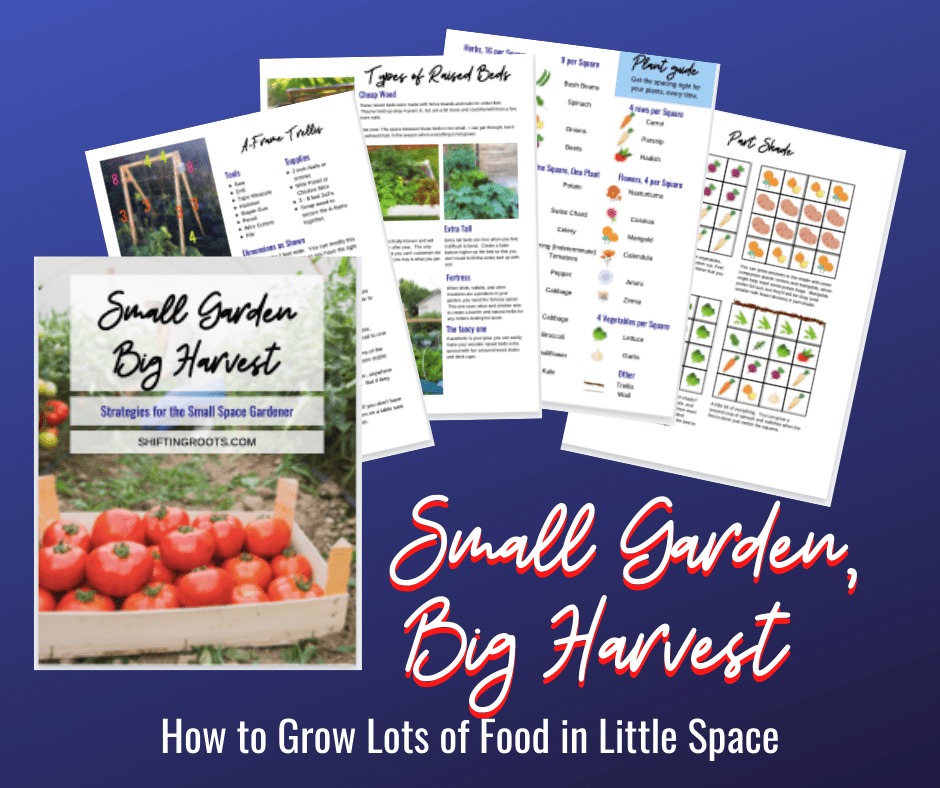



Bren
Cynthia Gaboury